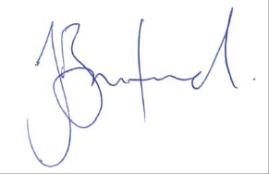 AUCKLAND
AUCKLAND
Customhouse, 50 Anzac Avenue, Auckland 1010
PO Box 29, Shortland Street, Auckland 1140
Phone: 09 927 8000 Fax: 09 927 8010
Website: www.customs.govt.nz
31 July 2017
Mr Andrew Crow
By email: [FYI request #6142 email]
Dear Mr Crow
Request for official information
Thank you for your email to the New Zealand Customs Service (Customs) dated 20 June
2017. You have requested the following information in relation to the quote from a TVNZ
interview "
We can seize their device at the moment, and we have tools to break that
encryption:
1.
Clarification of statements about encryption
2. Names of the tools
3. Any other information you feel would help in understanding the comment made to
TVNZ.”
Your request has been treated as a request for information pursuant to the provisions of the
Official Information Act 1982 (the Act).
It is important to note that Customs carries out extensive screening using data and
technology to identify those who might pose a risk to New Zealand. The number of travellers
searched is very low. In 2016, there were approximately six million international air
passenger arrivals into New Zealand. Customs searched about 0.01% of travellers
(compared to the total number of international air passenger arrivals into New Zealand) and
even fewer electronic devices.
In the interests of clarity, I will address each of your questions separately.
Question One: Clarification of statements about encryption
The statement you refer to was made in relation to instances where Customs officers
encounter a device that is encrypted, and there is reasonable cause to believe that it
contains evidence of offending against the Customs and Excise Act 1996. If the device has
been encrypted with one of the numerous forms of encryption on the market, the device is
detained (held) for a forensic examination. Customs uses a range of tools that may access
and examine the device.
Question Two: Names of the tools
Under section 6(c) of the Act, I am withholding the names of the requested tools. Section
6(c) allows for the withholding of information where the release of the information would be


likely to prejudice the maintenance of the law, including the prevention, investigation, and
detection of offences, and the right to a fair trial. In this instance, I believe that the release of
this information would be likely to compromise the investigative techniques used by Customs
to investigate possible offences under the Customs and Excise Act 1996.
Question Three: Any other information you feel would help in understanding the comment
made to TVNZ
Section 151 of the Customs and Excise Act 1996 provides Customs Officers with broad
powers to examine goods and search passengers’ luggage (a search of an electronic device
may be a component of this).
Customs uses scanning-type technology at airports to search electronic devices where there
is suspicion the device contains objectionable images, or material indicating involvement in
terrorist activity or organised crime. A Customs officer then views the results of the scan.
The temporary files created by the scan are deleted if no evidence of offending is located.
If nothing is found of relevance in the preliminary search, the device is returned. No files are
copied, and the password is not recorded in any way. If a forensic search of an electronic
device is required, the device will be subject to specialised techniques that will access
deleted and hidden files and images.
From the perspective of the passenger, the use of scanning technology at the preliminary
stage is quicker. It takes a few minutes compared to the much longer process of manually
viewing potentially large numbers of files or images. It also increases privacy as the
Customs officer does not need to look at any content on the phone unless the scanner
identifies something.
The Office of the Privacy Commissioner is aware of the technology Customs uses at airports
and considers that it is used appropriately and with regard to good privacy practice.
You may be interested to know that the proposed new legislation will include a threshold that
must be reached before an electronic device can be searched by Customs. This will mean
that the officer will have to have reasonable cause to suspect that the device contains
evidence of offending against the new Act. In a practical sense Customs already uses this
threshold, but the new law will formalise the requirement. The new legislation proposes that
if a traveller were to refuse access to his or her device, that person would have committed
an offence under the Act – thereby being liable, upon conviction, for a fine of up to $5000.
You have the right, by way of complaint to the Office of the Ombudsman under section 28(3)
of the Act, to seek an investigation and review of this decision. Information about how to
make a complaint is available online at
www.ombudsman.parliament.nz or you can
freephone 0800 802 602.
In the first instance if you have any queries in respect of this response, please contact
[email address]
Yours sincerely
Jamie Bamford
Group Manager, Intelligence, Investigations and Enforcement
P2 OF 2


